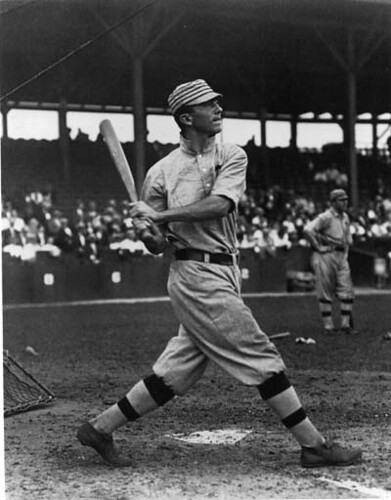I’m pleased to present this post from Joe Guzzardi, who writes a guest column here every Wednesday. Today, he looks at the vanishing art of the doubleheader.
__________________
Another Independence Day has come and gone without the once traditional doubleheader. Since half a century has passed when baseball fans could watch two games for the price of one, you’d think I’d be used to it.
I’m not. Nearly two generations have grown up since baseball’s Golden Age ended. When I realize that the new wave of fans identify a double header as a dreary day-night affair requiring separate admissions, I’m seriously bummed.
Back in the 1950s, the Sunday and holiday doubleheaders were among the summer’s most anticipated events. Since teams scheduled doubleheaders instead of slapping them together as a result of rain outs, we all marked our calendars accordingly.
Managers planned ahead, too. A Brooklyn Dodger-New York Giant double dip might pit Preacher Roe and Don Newcombe against Sal Maglie and Larry Jansen. A Cleveland Indian-Chicago White Sox match up could send Bob Feller and Bob Lemon to face Billy Pierce and Dick Donovan.
But no two names struck more fear into their American League rivals than the New York Yankees’ Allie Reynolds and Vic Raschi, the era’s dominant stoppers.
Reynolds was not only the Yankees number one starter but also the first man manager Casey Stengel called out of the bull pen. During Reynolds’ eight year Yankee career, he made 88 relief appearances.
On September 28, 1951 Reynolds and Raschi faced the Boston Red Sox in a late season double bill against Mel Parnell and Bill Wight. The Yankees took both ends, 8-0; 11-3, on (what else?) complete games.
But, although the Yankees clinched the pennant that late autumn day, the headlines weren’t about the Yankees sweep or the team’s third consecutive American League pennant.
In the opener, Reynolds (17-8) threw a no hitter, his second of the season—and one with a cliffhanger ending. To get his no-hitter, Reynolds would have to record twenty-eight outs.
With two gone in the bottom of the ninth, Reynolds had issued only four widely spread walks. At bat was the American League’s most feared hitter, Ted Williams who for the season would hit .318 with 30 HRs, 126 RBIs, OBP .464 and SLG .556.
Williams lofted a harmless foul ball behind the plate. Catcher Yogi Berra settled under the pop up but it squirted out of his glove.
The thought of Williams still alive at the plate when he should have been an easy out would have unnerved most pitchers. But Reynolds reassured Berra: “Don’t worry, Yogi. We’ll get him again.”
Sure enough, Williams sent another foul pop up that looked tougher than the first one. Yogi snared it in front of the Yankee dug out.
Reynolds’ line: 9 IP, 0 H, 0 ER, 4 BB, 9 K.
In the nightcap, Vic Raschi dominated the Sox. Led by Phil Rizutto, Hank Bauer and Joe DiMaggio, the Yankees romped, 11-3. Rizutto and Bauer had three hits each while DiMaggio slammed a 3-run homer.
Never having to worry about run support, Raschi (21-10) coasted.
His line: 9 IP, 6 H, 3 ER, 4 BB, 5 Ks.
Here’s another oddity about those two games. The Yankees used the same position players without substituting in either contest—no pinch hitters, no pinch runners and no defensive replacements.
The line ups:
Phil Rizzuto, SS
Jerry Coleman, 2B
Hank Bauer, RF
Joe DiMaggio, CF
Gil MacDougald, 3B
Yogi Berra, C
Gene Woodling LF
Joe Collins, 1B
The game times were an efficient 2:12 and 2:33.
In case the double dip on the 28th didn’t provide enough baseball to satisfy fans, the Yanks and Sox returned on the 29th for two more! Again, the Yankees swept, 4-0 and 3-1.
In the opener the third of the Yankee ace, Eddie Lopat (21-9) hurled six shutout innings before giving way to lefty Bob Kuzava. The second game was another dreary affair for the lifeless Sox who would finish in third place, eleven games of the pace. Tom Morgan, 9-3, picked up the win.
With the pennant wrapped up, the Yankees let some of its second stringers play. Take a look at the bench depth: Billy Martin, Bobby Brown, Jackie Jensen and Clint Courtney.
Only a few days later, the Yankees were again baseball’s world champs when they bested the New York Giants in the World Series, 4-2. Lopat won two games; Reynolds and Raschi, one each.
__________________
Joe Guzzardi is a writer and member of the Society for American Baseball Research. Email him at guzzjoe@yahoo.com.
